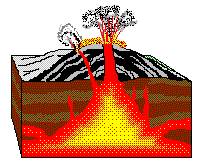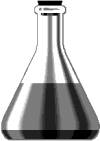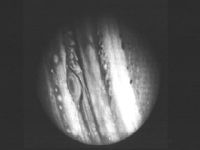Ellen White's Top 7 Science-Defying Statements
Compiled by Brother Anderson

1. Mrs. White on Geology
Here Mrs. White describes the cause of earthquakes and volcanoes:
"At this time immense forests were buried. These have since been changed to coal, forming the extensive coal beds that now exist, and also yielding large quantities of oil. The coal and oil frequently ignite and burn beneath the surface of the earth. Thus rocks are heated, limestone is burned, and iron ore melted. The action of the water upon the lime adds fury to the intense heat, and causes earthquakes, volcanoes, and fiery issues. As the fire and water come in contact with ledges of rock and ore, there are heavy explosions underground, which sound like muffled thunder. The air is hot and suffocating. Volcanic eruptions follow; and these often failing to give sufficient vent to the heated elements, the earth itself is convulsed, the ground heaves and swells like the waves of the sea, great fissures appear, and sometimes cities, villages, and burning mountains are swallowed up."1
The real cause of earthquakes is the movement of the earth's tectonic plates, not coal burning beneath the surface:
"The immediate cause of most shallow earthquakes is the sudden release of stress along a fault, or fracture, in the earth's crust, resulting in the movement of opposing blocks of rock past one another. This causes vibrations to pass through and around the earth in wave form."2
Volcanic eruptions are not caused by coal and oil burning beneath the earth's surface. They are caused by rising magma (molten rock material) regions beneath the earth's surface:
"Geologists once thought that the chief cause of volcanic action was the introduction of water into the highly heated interior of the earth. In recent years, however, as the mechanics of interaction of the earth's crustal plates have become better understood, geologists have succeeded in incorporating volcanism into the theory of plate tectonics. Wherever they occur, active volcanoes ultimately derive their energy from processes associated with movements of crustal plates. They tend, moreover, to be spatially associated with major plate boundaries."Volcanoes form at two kinds of plate boundaries: convergent and divergent. At the former, where one plate plunges (is subducted) beneath the other, material on the upper surface of the subducted plate is dragged downward on an oblique path into the earth's crust until it reaches a depth where it becomes molten. It then rises along vertical fissures and is ejected at the surface through a volcanic vent. At divergent plate boundaries, such as the mid-Atlantic ridge, where oceanic crust is being stretched and rifted apart, a linear zone of weakness (spreading center) forms; this serves as an outlet for eruption of magma (deep-lying molten rock material) brought upward by giant convection currents in the mantle."3

2. Mrs. White on Pharmacology
Mrs. White was thoroughly opposed to the use of drugs. One of the drugs she was opposed to is quinine:
"A physician who has the moral courage to peril his reputation in enlightening the understanding by plain facts, in showing the nature of disease and how to prevent it, and the dangerous practice of resorting to drugs, will have an up-hill business, but he will live and let live. He will not use his powerful drug medication, because of the knowledge he has acquired by studying books. ... Drugs are too often promised to restore health, and the poor sick are so thoroughly drugged with quinine, morphine, or some strong health-and life-destroying (word illegible), that nature may never make sufficient protest, but give up the struggle; and they may continue their wrong habits with hopeful impunity."4
Before the development of synthetic drugs, quinine was a "miracle-drug" that was used to treat malaria. Unfortunately, some Adventist missionaries apparently took Mrs. White's extreme counsel to heart and paid for it with their lives:

"A row of graves in Africa mark the site of the first SDA missionaries. They were told by authorities to take quinine, but as Adventists they got their marching orders from a higher source. They knew that quinine was valueless: they trusted Mrs. White that she had been shown this by God, and as a result they died."5
W.C. White, son of the prophetess, relates the experience of one missionary who lost his son to malaria because he followed the prophet's counsel and refused to administer quinine:
"One time while we were in Australia, a brother who had been acting as a missionary on the islands, told mother of the sickness and death of his first-born son. He was seriously afflicted with malaria, and his father was advised to give him quinine, but in view of the counsel in the testimonies to avoid the use of quinine he refused to administer it, and his son died."6
3. Mrs. White on Zoology

Mrs. White claimed that sexual union between man and animals resulted in the production of new species of half-human, half-animal creatures:
"Every species of animal which God had created were preserved in the ark. The confused species which God did not create, which were the result of amalgamation, were destroyed by the flood. Since the flood there has been amalgamation of man and beast, as may be seen in the almost endless varieties of species of animals, and in certain races of men."7
Science has proven that it is impossible for human sperm to impregnate the eggs of non-humans. This statement was so absurd and unscientific that it was removed from later publications of the book. (Click here for an in-depth study on amalgamation).

4. Mrs. White on Astronomy
In 1847, Mrs. White had a vision of the solar system. She was shown Jupiter and described it as having four moons. She saw that Saturn had seven moons, and Uranus had six. Of course, these were the exact number of moons astronomers had discovered around these planets by 1847. Astronomers today know that Jupiter has at least 79 moons, Saturn has at least 82 moons, and Uranus has at least 27 moons.
Mrs. White also claimed to have seen a "tall, majestic people" living on either Jupiter or Saturn. This seems unlikely, since (1) the surfaces of both planets are covered by a sea of liquid hydrogen, (2) the temperatures are inhospitable to any type of life we know of, and (3) the atmospheric pressure is powerful enough to crush and pulverize the strongest metals. (Click here for an in-depth study on Mrs. White's solar system vision).
5. Mrs. White on Medicine

Ellen White taught that the disease "scrofula" could be passed from mother to child:
"Very many children are born with their blood tainted with scrofula through the wrong habits of the mother in her eating and dressing."8"Their blood was filled with scrofula, transmitted to them from their parents..."9
At one time scrofula and tuberculosis were considered different diseases, but modern medical science recognizes scrofula as merely a form of tuberculosis infection found in the lymph nodes. In the 19th century it was supposed that tuberculosis could be passed from mother to child, but science has since proven that notion to be false.10
6. Mrs. White on Genetics
Mrs. White believed that acquired physical characteristics would be passed down genetically to the next generation:

"By lacing, the internal organs of women are crowded out of their positions. There is scarcely a woman that is thoroughly healthy. The majority of women have numerous ailments. Many are troubled with weaknesses of most distressing nature. These fashionably dressed women cannot transmit good constitutions to their children. Some women have naturally small waists. But rather than regard such forms as beautiful, they should be viewed as defective. These wasp waists may have been transmitted to them from their mothers, as the result of their indulgence in the sinful practice of tight-lacing, and in consequence of imperfect breathing. Poor children born of these miserable slaves of fashion have diminished vitality, and are predisposed to take on disease. The impurities retained in the system in consequence of imperfect breathing are transmitted to their offspring."11"'But my waist is naturally slender,' says one woman. She means that she has inherited small lungs. Her ancestors, more or less of them, compressed their lungs in the same way that we do, and it has become in her case a congenital deformity."12
The idea that acquired physical characteristics such as "wasp waists" are passed genetically to the next generation is nothing more than a myth. There is no scientific evidence that these type of physical changes can be passed down to the next generation. It was simply a 19th century myth that has been discarded by the modern medical community.
7. Mrs. White on Demography
In the 1860s Ellen White had a vision in which she saw the human race deteriorating in advance of the soon-coming depopulation of the planet:
"The present enfeebled condition of the human family was presented before me. Every generation has been growing weaker, and disease of every form afflicts the race. Thousands of poor mortals with deformed, sickly bodies, shattered nerves, and gloomy minds are dragging out a miserable existence. Satan's power upon the human family increases. If the Lord should not soon come and destroy his power, the earth would erelong be depopulated."13
Forty years after that statement, in the year 1900, the world population stood at 1.6 billion. By May of 2020, it passed 7.6 billion. Should the world last, population experts fear that there may be as many as 27 billion people living on the face of this planet by the year 2150. Surely knowledge about nutrition and longevity have increased, as predicted by the prophet Daniel. Many infectious diseases have been eliminated since the discoveries of Pasteur and Koch. Advances in nutrition and medical knowledge have allowed people to live longer, healthier lives than at any other time in human history.
Citations
1. Ellen White, Patriarchs and Prophets, p. 108.
2. The Concise Columbia Encyclopedia. Copyright © 1995 by Columbia University Press.
3. "Volcano," Microsoft Encarta. Copyright (c) 1993 Microsoft Corporation. Copyright (c) 1993 Funk & Wagnall's Corporation.
4. Ellen White, The Paulson Collection, p. 22.
5. Gregory Hunt, M.D., Beware this Cult, chapter 4, "Ellen White and Medicine".
6. W.C. White letter, September 10, 1935 - COMPILERS - Counsels on Health, p. 261 (1890).
7. Ellen White, Spiritual Gifts, Vol. 3, p. 75.
8. Ellen White, Health Reformer, November 1, 1871.
9. Ellen White, Healthful Living, p. 151.
10. Dr. Vasundhara Atre, "Tuberculosis: Myths and Facts", quote: "Tuberculosis is not hereditary", http://www.scribd.com/doc/35034/SG-KE-TOI-Tuberculosis-Myths-and-facts, extracted Feb. 8, 2008. Dr. John Harvey Kellogg, on page 851 of his book The Home Book of Family Medicine: A Family Guide in Health and Disease Part 2 (1914), writes of scrofula, "not that the disease itself may be inherited, as is generally supposed."
11. Ellen White, Health Reformer Nov. 1, 1871.
12. Ibid., Oct. 31, 1871.
13. Ellen White, Testimonies, vol. 1, p. 304.
